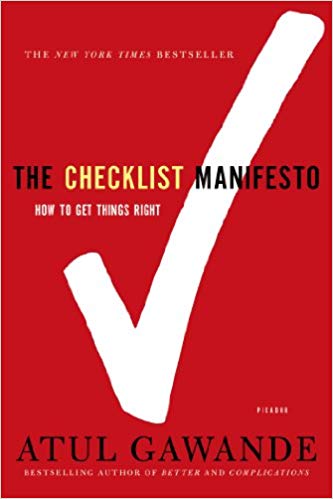

This article is an excerpt from the Shortform summary of "The Checklist Manifesto" by Atul Gawande. Shortform has the world's best summaries of books you should be reading.
Like this article? Sign up for a free trial here .
What was Van Halen’s problem with brown M&Ms? And what do brown M&Ms have to do with safety?
We’ll cover why David Lee Roth of Van Halen insisted on a “brown M&M clause” in Van Halen’s contract, and why this clause was actually really important.
Van Halen + Brown M&Ms
Van Halen concerts: Many people have heard the story about rocker David Lee Roth’s insistence that Van Halen contracts with local concert promoters contain an unusual clause. It requires that a bowl of M&Ms be provided backstage, but with all of the brown candies removed or the show would be canceled. In at least one case, the band canceled a show for that reason. The contract was clear: No brown M&Ms.
Roth later explained in his memoir, Crazy from the Heat, that the “brown M&M” clause actually was a test to see whether the promoter had read the details of the contract. Reading the “fine print” was important because the contract was, in effect, a checklist of steps that needed to be taken to set up the stage safely. If the directions weren’t followed exactly, people could be injured. Roth added the “brown M&M” clause when the group started performing in smaller regional venues where local crews might make technical errors with the set-up. It paid off because in Colorado the local promoter had failed to read weight requirements, and the equipment would have fallen through the arena floor.
The Power of Checklists in Other Areas
The Van Halen “M&M clause” was a way of making sure the people the band worked with followed the checklist. Others have found checklists beneficial as well.
Rialto restaurant, Boston: Jody Adams, chef and owner of the popular restaurant focusing on regional Italian cuisine, uses checklists to achieve excellence and consistency.
A recipe for each dish is placed in clear plastic sleeves at each station — line cooks need to consult them because recipes are revised at times. Also, there’s a checklist for every customer. When an order is placed at the front of the restaurant, it’s printed out in the kitchen, with customer details and preferences noted in a database from previous visits. The sous chef reads the orders aloud, and line cooks are expected to repeat the items to confirm they heard them correctly.
Adams also has a communication checklist to ensure that her staff recognizes and handles unexpected problems as a team. An hour before opening, she has a quick team meeting to discuss any unexpected issues or concerns — for example, a delay in a birthday party of 20 girls, which meant they’d arrive during the dinner rush. Whatever the issue, everyone gets a chance to speak and they plan how to handle it.
As a final check, Adams or her sous chef reviews every plate before it leaves the kitchen to make sure it looks good and matches the order. About 5 percent are sent back.
Even in a profession like cooking, which is more art than science, checklists are helpful and, like the Van Halen “M&M clause,” they can ensure excellence.
The Benefits of Checklists
In complex environments, checklists can help to prevent failure by addressing two problems:
1) Our memory and our attention to detail fail when we’re distracted by more urgent matters. For instance, if you’re a nurse, you might forget to take a patient’s pulse when she’s throwing up, a family member is asking questions, and you’re being paged.
Forgetfulness and distraction are especially risky in what engineers call all-or-none processes, where if you miss one key thing, you fail at the task. For instance, if you go to the store to buy ingredients for a cake and forget to buy eggs, you can’t make the recipe because it wouldn’t work without eggs. The consequences are more serious if a pilot misses a step during take-off or a doctor misses the key symptom.
2) People have a tendency to skip steps even when they remember them. In complex processes, certain steps don’t always matter, so people may play the odds and skip them. For instance, if measuring all four of a patient’s vital signs (pulse, blood pressure, temperature, and respiration) only rarely detects a problem, you might become lax about checking everything.
Checklists like the contract with Van Halen’s M&M clause protect against such failures because they remind you of the minimum necessary steps by spelling them out. They allow you to verify each step while also establishing and instilling a performance standard.
———End of Preview———

Like what you just read? Read the rest of the world's best summary of "The Checklist Manifesto" at Shortform . Learn the book's critical concepts in 20 minutes or less .
Here's what you'll find in our full The Checklist Manifesto summary :
- How checklists save millions of lives in healthcare and flights
- The two types of checklists that matter
- How to create your own revolutionary checklist






